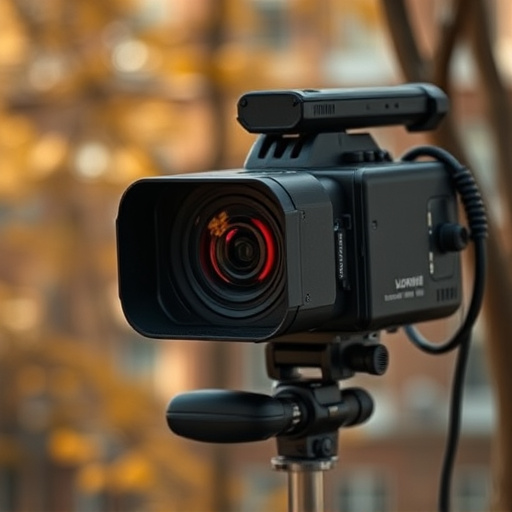Small hidden cameras in bedrooms, once bulky, have evolved into discreet devices, allowing for private surveillance. These cameras blend into everyday items, offer advanced features like motion detection and night vision, and help ensure safety without disturbing sleep. Detecting RF signals from these cameras requires specialized equipment focusing on specific bands (3.1-3.9 GHz or 4.2-4.8 GHz), sweeping systematically for weak signals. Using RF detectors and scanning strategically helps uncover hidden cameras in common spots like picture frames, requiring patience and careful observation.
Uncover the secrets of your bedroom with this comprehensive guide to detecting small hidden cameras. In today’s digital age, privacy is paramount, and knowing how to identify these covert devices is essential. This tutorial delves into understanding the subtlest forms of bedroom surveillance, recognizing radio frequency (RF) signals, and mastering sweeping techniques for effective detection. Get equipped to protect your personal space.
- Understanding Small Hidden Cameras for Bedroom Surveillance
- Detecting RF Signals from Hidden Cameras in Bedrooms
- Sweeping Techniques: Uncovering Bedroom's Secret Cameras Effectively
Understanding Small Hidden Cameras for Bedroom Surveillance
Small hidden cameras, designed for bedroom surveillance, have evolved from bulky devices to sleek, almost unnoticeable gadgets. These tiny eyes in the sky offer a discreet way to ensure privacy and security while you sleep. Their compact size allows them to be easily concealed within common household items like picture frames, potted plants, or even light switches.
This technology is particularly useful for catching intruders or monitoring activities that may occur when you’re away from home. With their advanced motion detection and night vision capabilities, small hidden cameras can record vital evidence without disrupting your peaceful bedroom environment.
Detecting RF Signals from Hidden Cameras in Bedrooms
Detecting radio frequency (RF) signals from small hidden cameras in bedrooms is a critical step in ensuring privacy. These miniature devices often operate on specific RF bands, making them vulnerable to detection by specialized equipment. When searching for such hidden cameras, focus on frequencies commonly used by small bedroom cameras, typically between 3.1-3.9 GHz or 4.2-4.8 GHz.
Using a high-quality RF detector, you can sweep these bands systematically. Start at one end of the spectrum and move across gradually, noting any peaks or anomalies that could indicate a hidden camera’s signal. Remember to be patient and thorough; small hidden cameras for bedrooms can emit weak signals, so precise equipment and careful observation are key to successful detection.
Sweeping Techniques: Uncovering Bedroom's Secret Cameras Effectively
Uncovering hidden cameras in a bedroom requires a strategic approach, especially when dealing with small hidden cameras for bedroom spaces. One effective sweeping technique involves utilizing radio frequency (RF) detection devices. These tools emit signals that can interact with the tiny cameras’ transmitters, revealing their presence. By systematically scanning the room—from wall corners to behind furniture—you can detect any RF emissions, indicating potential camera locations.
It’s crucial to be thorough and patient during this process. Small hidden cameras for bedroom setups might be cleverly concealed in common spots like picture frames or clock radios. Adjusting your device’s sensitivity settings can help pick up on faint signals, ensuring no camera goes unnoticed. Regular intervals between scans allow for a comprehensive check, making it possible to identify and neutralize any covert recording devices effectively.
Unraveling the secrets of your bedroom’s hidden surveillance is now within reach. By understanding the unique characteristics of small hidden cameras and employing effective RF detector sweep techniques, you can ensure your privacy. Detecting these covert devices early is crucial to safeguarding your personal space. With the right tools and knowledge, as outlined in this tutorial, you’ll be well-equipped to navigate and counter potential privacy breaches associated with these tiny yet powerful tools. Stay vigilant and take control of your bedroom’s security.
